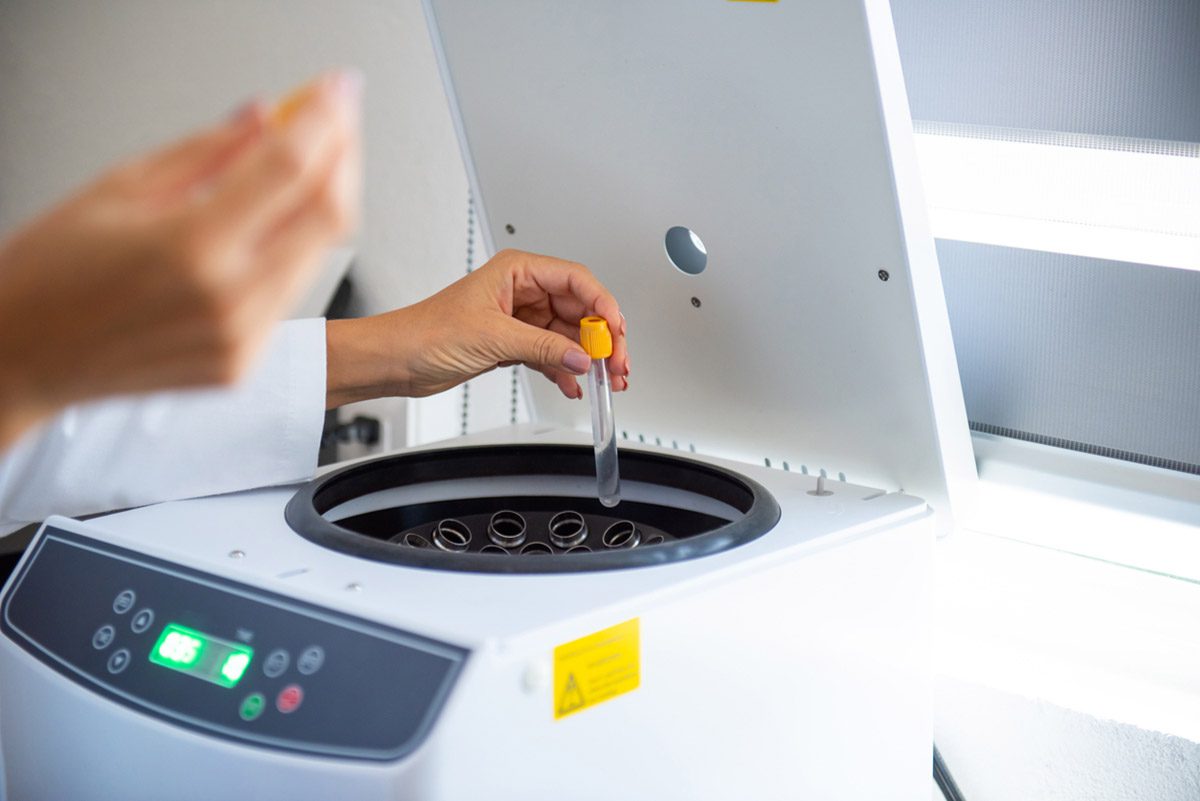Because this piece does not have an abstract, we have provided for your benefit the first 3 sentences of the full text.
Serotonin toxicity may be observed when the therapeutic use of antidepressants influences serotoninergic neurotransmission. There is a gradation in the severity of the clinical manifestations, usually with a rapid improvement when the offending drug is stopped. The recurrence of toxicity after the reintroduction of a serotoninergic drug should prompt the investigation of a genetic polymorphism for hepatic metabolism.


Recurrence of Serotonin Toxicity and Influence of Cytochrome 2D6 Polymorphism
Serotonin toxicity may be observed when the therapeutic use of antidepressants influences serotoninergic neurotransmission. There is a gradation in the severity of the clinical manifestations, usually with a rapid improvement when the offending drug is stopped. The recurrence of toxicity after the reintroduction of a serotoninergic drug should prompt the investigation of a genetic polymorphism for hepatic metabolism.
Case Report
A 48-year-old man was admitted to the psychiatric ward for depression and behavioral and cognitive disorders. He had a past medical history of Parkinson disease. His usual treatment included levodopa 125 mg 6 times/d, trazodone 50 mg/d, quetiapine 200 mg/d, clomipramine 75 mg/d, and rivastigmine 4.6 mg/d. Mirtazapine 30 mg/d and venlafaxine (75 mg, then 225 mg/d after 6 days) were introduced on hospital day 3 to replace quetiapine and clomipramine, which were progressively withdrawn. There was an overlap of venlafaxine with the regressive dose of quetiapine for 8 days. Three weeks after this therapeutic modification, the patient became more apathetic and mutic. He was referred to the intensive care unit (ICU) for altered consciousness (Glasgow Coma Scale1: 6/15, E4V1M1) with hyperthermia (temperature: 103.5°F [39.7°C]). A neurologic examination revealed diffuse tremor, hypertonia predominating in the lower limbs, hyperreflexia, and inducible clonus. In addition, tachycardia (130 bpm) and diaphoresis were noted. According to Hunter’s criteria,2 serotonin toxicity was suspected. The differential diagnosis included neuroleptic malignant syndrome, as quetiapine had been recently withdrawn.
In the ICU, the patient was managed conservatively with cooling measures, fluid therapy, and benzodiazepines. The possibly offending serotoninergic drugs (trazodone, mirtazapine, and venlafaxine) were discontinued. Routine investigations excluded any infectious episode. Laboratory findings were not relevant, except for creatine kinase levels of 4,379 IU/L (< 200) with a mild increase in serum creatinine (1.48 mg/dL, < 1.30). Within the first 24 hours after ICU admission, the patient’s fever, hypertonia, and hyperreflexia decreased, and his cognition improved significantly.
The patient was transferred to another hospital for neurologic rehabilitation with his antiparkinson medication. Three months after the first episode, the psychiatrist advised to reinitiate a low dose of venlafaxine (37.5 mg/d for 2 days, then 75 mg/d); no other serotoninergic agent was simultaneously prescribed. A few hours after the first dose of 75 mg, the patient was found confused with tremor, hypertonia, and hyperreflexia. Serotonin toxicity was again suspected, and venlafaxine was withdrawn. Oral cyproheptadine was given for 2 days, and his neurologic condition improved rapidly. Two weeks later, the patient was sent home taking levodopa, pregabalin, and prazepam, as these medications are not influenced by the same metabolic pathway as venlafaxine. At 6-month follow-up, the patient’s psychological condition had stabilized, and no further sign of drug toxicity was observed.
A blood sample was drawn in a ethylenediaminetetraacetic acid tube (Sarstedt Group, N×¼mbrecht, Germany) for genotyping purposes. Genomic DNA was extracted from whole blood using a QIAamp DNA Mini Kit (Qiagen, Toronto, Ontario, Canada). Genotyping for cytochrome (CYP) 2D6 polymorphisms used multiplex polymerase chain reaction and multiplex allele-specific primer extension with a universal tag-sorting system (xTAG CYP2D6 kit v3, Luminex Molecular Diagnostics, Toronto, Ontario, Canada). The investigated alleles were CYP2D6*2, *3, *4, *5, *6, *7, *8, *9, *10, *11, *15, *17, *29, *35, *41, and duplication. Methods used for the genotyping of CYP2C19 included allelic discrimination reactions with TaqMan MGB probes (Applied Biosystems, Foster City, California). The investigated alleles were CYP2C19*2, *3, and *17. The patient was found to have CYP2D6*41/*41, corresponding to an intermediate metabolizer with reduced CYP2D6 activity, and CYP2C19*1/*17, corresponding to a rapid metabolizer for CYP2C19.
Discussion
Trazodone is mainly metabolized to m-chlorophenylpiperazine (mCPP) via the CYP3A4 and CYP3A5 isoenzymes, while CYP2D6 phenotypes do not influence trazodone or mCPP levels. Mirtazapine and venlafaxine are both substrates for CYP2D6. CYP2D6 contributes to about 25% of total clearance of mirtazapine in subjects with only 1 active allele.3 Venlafaxine is metabolized into its major active metabolite, O-desmethylvenlafaxine, by CYP2D6 and also by CYP2C19 and CYP2C9, although to a lesser extent. CYP2C19 is also involved in the formation of another venlafaxine metabolite, N-desmethylvenlafaxine, with no pharmacologic activity. The CYP2D6 gene is highly polymorphic with over 100 known allelic variants and subvariants identified so far.4 According to the minor allelic frequencies of CYP2D6 alleles described in major ethnic groups, the expected frequency of the CYP2D6*41/*41 genotype is estimated to be 0.60% in the white population.5 Interestingly, this particular genotype has been recently associated with a very low CYP2D6 activity toward venlafaxine—close to that observed in CYP2D6 poor metabolizers.6 Therefore, venlafaxine metabolism was probably largely reduced in our patient.
While CYP2D6 metabolizer status may have a significant influence on venlafaxine pharmacokinetics, the association between CYP2D6 metabolizer status and the overall rate of adverse events remains unclear.7 There are isolated case reports8-10 of serotonin syndrome in intermediate or poor metabolizers of CYP2D6. Genetic screening for CYP2D6 may be useful before the reintroduction of a serotoninergic drug that uses this metabolic pathway.11
Published online: November 27, 2019.
Potential conflicts of interest: None.
Funding/support: None.
Patient consent: Written consent was obtained from the patient to publish this case report, and information has been de-identified to protect anonymity.
REFERENCES
1.Teasdale G, Maas A, Lecky F, et al. The Glasgow Coma Scale at 40 years: standing the test of time. Lancet Neurol. 2014;13(8):844-854. PubMed CrossRef
2.Dunkley EJ, Isbister GK, Sibbritt D, et al. The Hunter Serotonin Toxicity Criteria: simple and accurate diagnostic decision rules for serotonin toxicity. QJM. 2003;96(9):635-642. PubMed CrossRef
3.Kirchheiner J, Henckel HB, Meineke I, et al. Impact of the CYP2D6 ultrarapid metabolizer genotype on mirtazapine pharmacokinetics and adverse events in healthy volunteers. J Clin Psychopharmacol. 2004;24(6):647-652. PubMed CrossRef
4.Hicks JK, Bishop JR, Sangkuhl K, et al; Clinical Pharmacogenetics Implementation Consortium. Clinical Pharmacogenetics Implementation Consortium (CPIC) guideline for CYP2D6 and CYP2C19 genotypes and dosing of selective serotonin reuptake inhibitors. Clin Pharmacol Ther. 2015;98(2):127-134. PubMed CrossRef
5.Annotation of DPWG Guideline for venlafaxine and CYP2D6. PharmGKB website. https://www.pharmgkb.org/guidelineAnnotation/PA166104968. Accessed October 9, 2019.
6.Haslemo T, Eliasson E, Jukić MM, et al. Significantly lower CYP2D6 metabolism measured as the O/N-desmethylvenlafaxine metabolic ratio in carriers of CYP2D6*41 versus CYP2D6*9 or CYP2D6*10: a study on therapeutic drug monitoring data from 1003 genotyped Scandinavian patients. Br J Clin Pharmacol. 2019;85(1):194-201. PubMed CrossRef
7.Lin XQ, Wang P, Cai WK, et al. The associations between CYP2D6 metabolizer status and pharmacokinetics and clinical outcomes of venlafaxine: a systematic review and meta-analysis. Pharmacopsychiatry. 2019;52(5):222-231. PubMed CrossRef
8.Sato A, Okura Y, Minagawa S, et al. Life-threatening serotonin syndrome in a patient with chronic heart failure and CYP2D6*1/*5. Mayo Clin Proc. 2004;79(11):1444-1448. PubMed CrossRef
9.Gressier F, Ellul P, Dutech C, et al. Serotonin toxicity in a CYP2D6 poor metabolizer, initially diagnosed as a drug-resistant major depression. Am J Psychiatry. 2014;171(8):890. PubMed CrossRef
10.Garcia S, Schuh M, Cheema A, et al. Palpitations and asthenia associated with venlafaxine in a CYP2D6 poor metabolizer and CYP2C19 intermediate metabolizer. Case Rep Genet. 2017;2017:6236714. PubMed CrossRef
11.Tomaselli G, Modestin J. Repetition of serotonin syndrome after reexposure to SSRI: a case report. Pharmacopsychiatry. 2004;37(5):236-238. PubMed CrossRef
aDepartment of Intensive Care, Cliniques St-Luc, Université catholique de Louvain, Brussels, Belgium
bDepartment of Neurology, Centre Hospitalier William Lennox, Ottignies, Belgium
cClinical Chemistry Department, Cliniques St-Luc, Université Catholique de Louvain, Brussels, Belgium
dLouvain Centre for Toxicology and Applied Pharmacology, Université Catholique de Louvain, Brussels, Belgium
*Corresponding author: Philippe Hantson, MD, PhD, Department of Intensive Care, Cliniques Universitaires St-Luc, Ave Hippocrate, 10, 1200 Brussels, Belgium ([email protected]).
Prim Care Companion CNS Disord 2019;21(6):19l02426
To cite: Volon B, Willemart T, Haufroid, et al. Recurrence of serotonin toxicity and influence of cytochrome 2D6 polymorphism. Prim Care Companion CNS Disord. 2019;21(6):19l02426.
To share: https://doi.org/10.4088/PCC.19l02426
© Copyright 2019 Physicians Postgraduate Press, Inc.
Please sign in or purchase this PDF for $40.00.



